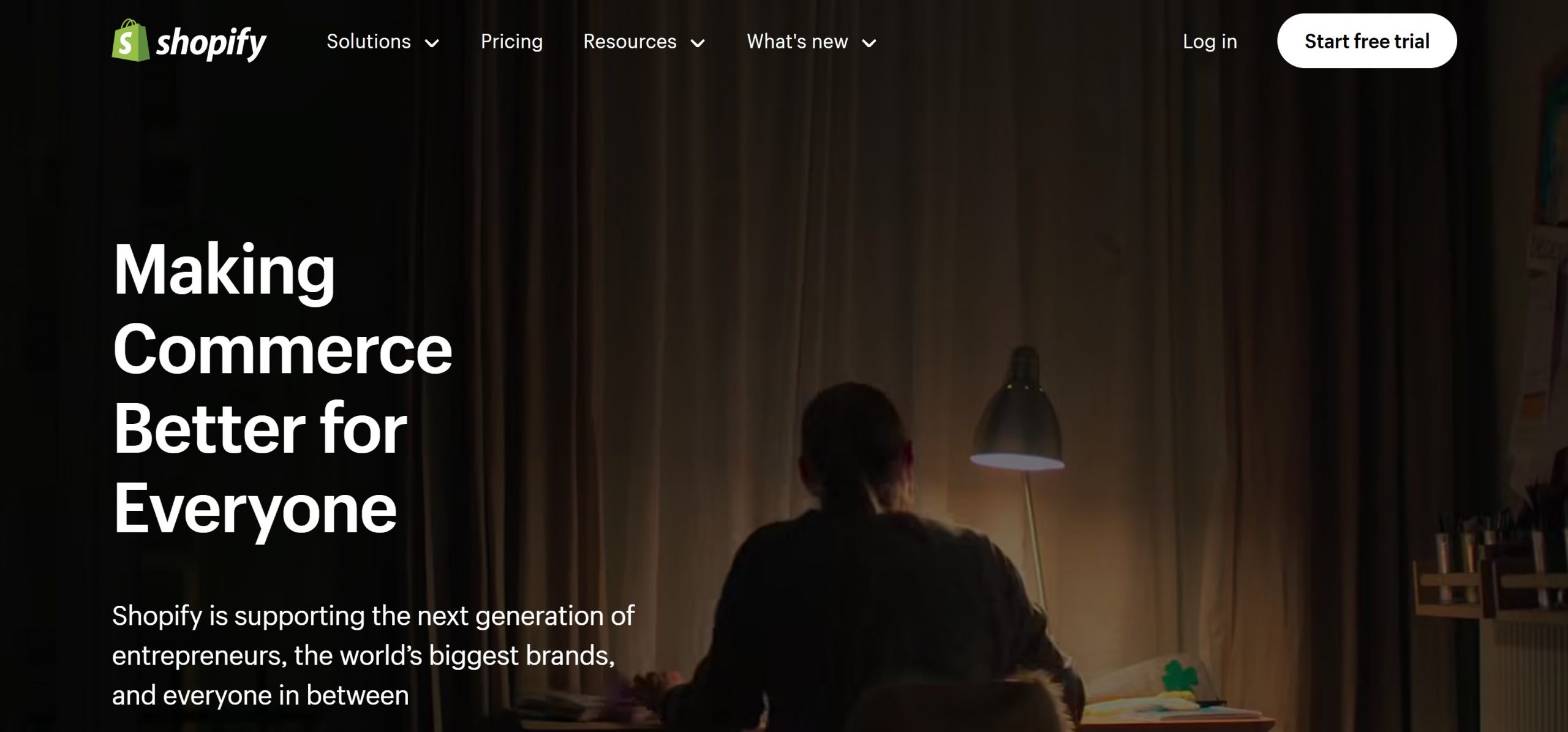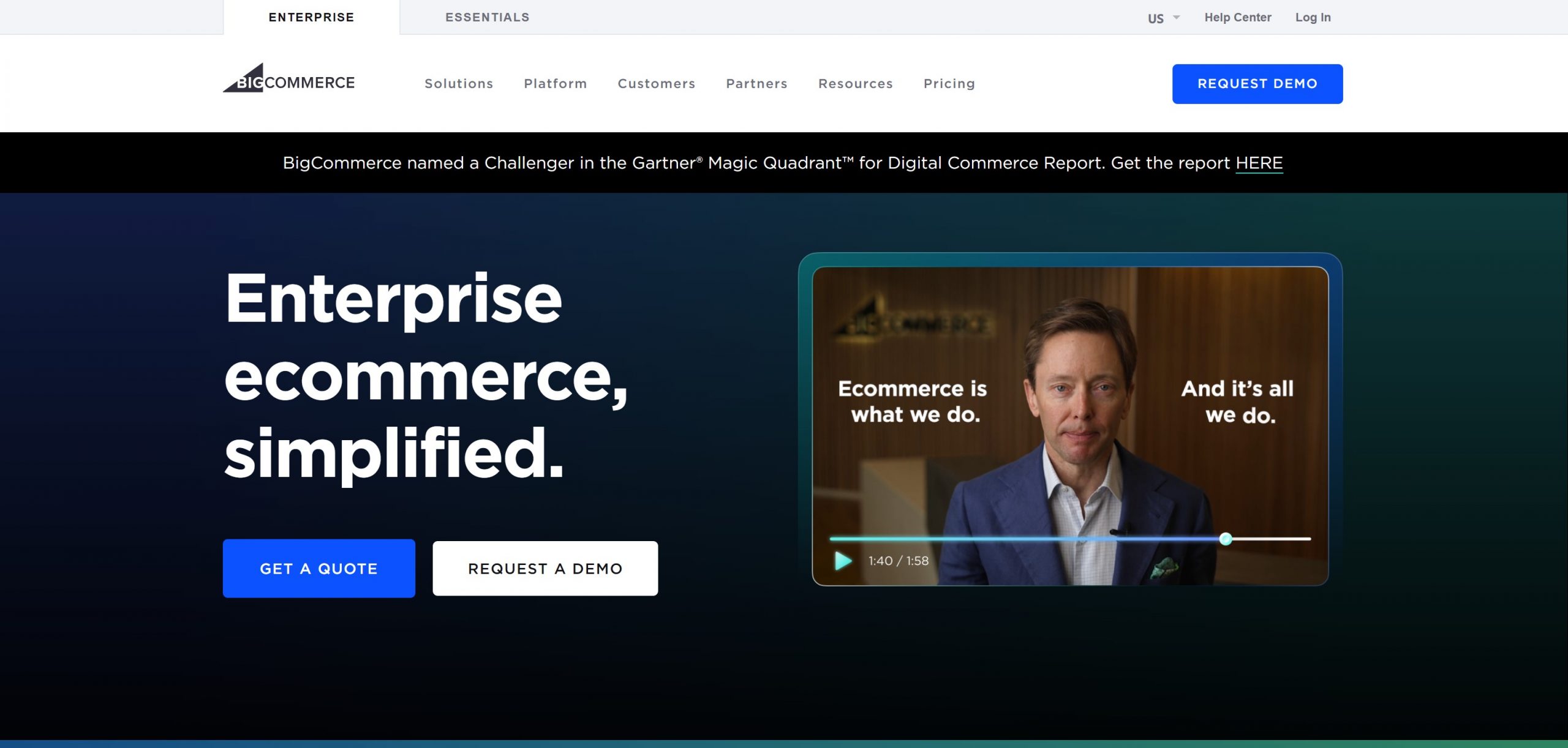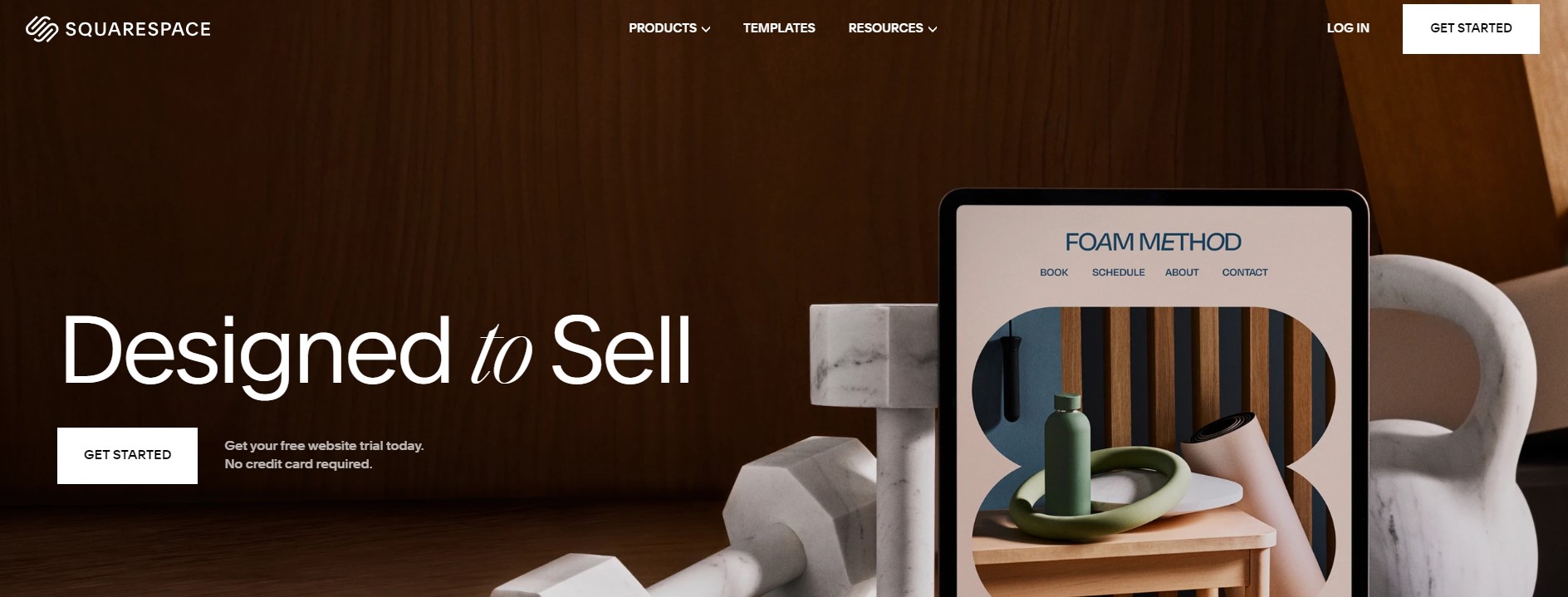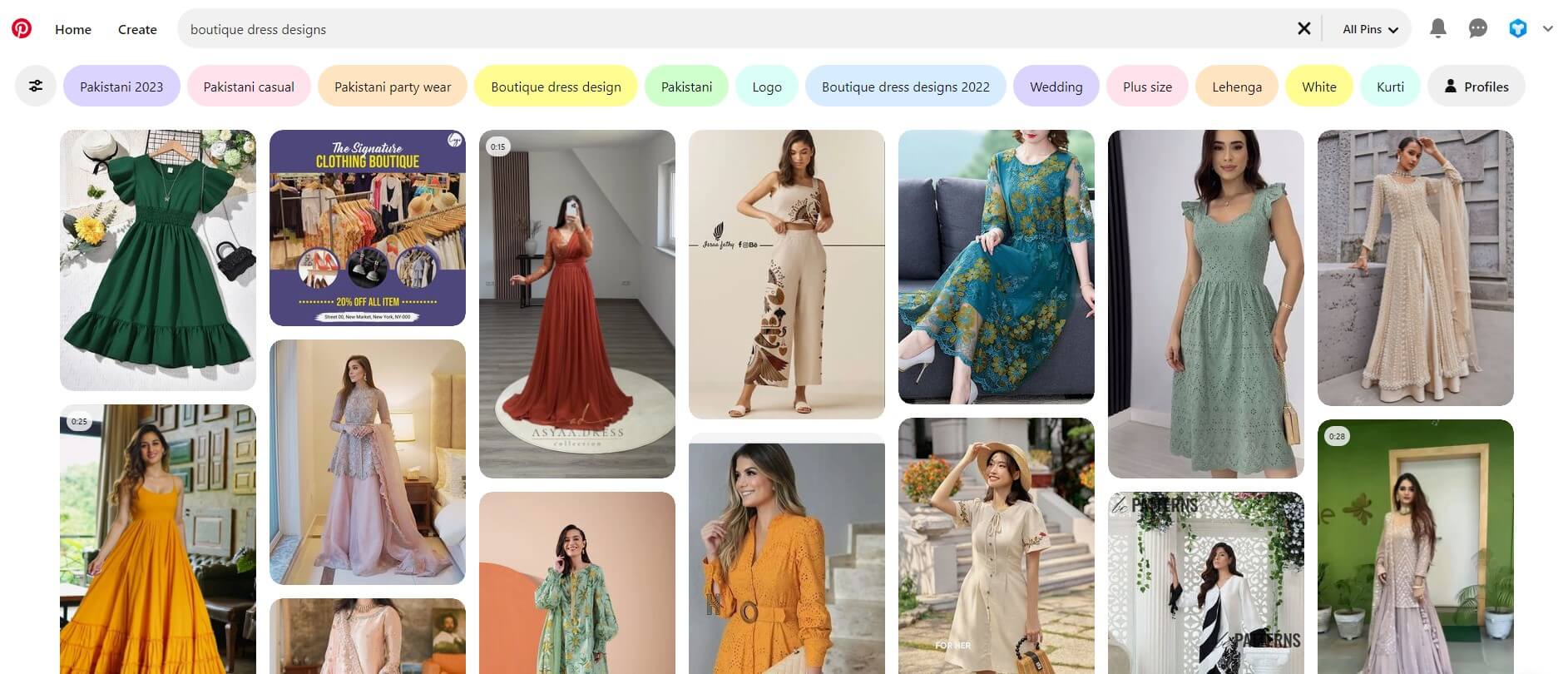Tired of the 9-5 grind?
Fed up with rigid schedules and uninspiring work?
Dreaming of setting your own hours and building something that fuels your passion?
An online boutique could be your ticket to freedom and doing work you truly love. With the right planning, you can ditch that dreary commute, curate your own collection, and build a business that showcases your unique sense of style.
If you’re ready, here’s your step-by-step guide on how to start an online boutique.
Contents
Step 1: Choose a Niche
When starting an online boutique, the first step is to decide on a niche. A niche is a specific area where you focus your products to meet the needs of a particular group of customers.
Choosing the right niche is very important because it helps set your store apart from others. To do this right, keep your interests and expertise in mind.
Interests
Think about what types of clothing you are most interested in.
Are you excited by eco-friendly clothes, classic vintage looks, or comfortable sportswear? Focusing on what you love is crucial because it keeps you enthusiastic and dedicated.
Expertise
Reflect on any special knowledge you have that could help your boutique.
Maybe you have experience working in a clothing store, you studied fashion design, or you are part of a community that loves unique styles, like gothic or preppy fashion.
This expertise can guide you in choosing products that will appeal to your customers and help you provide better service.
By considering both your passions and your expertise, you can choose a niche that not only stands out but also feels rewarding to manage. This way, you will enjoy working on your boutique every day and provide value to your customers.
Remember, the more you connect with your niche, the more your enthusiasm will show, attracting customers who share your interests.
Step 2: Market Analysis

After you choose a niche for your online boutique, the next step is to conduct a market analysis. This involves understanding the demand for your products, studying your competition, and identifying who your ideal customer is.
Assess Market Viability
You need to find out if people are interested in buying what you plan to sell. Here are some ways to check:
- Google Trends: Use this tool to see how many people are searching for keywords related to your niche over time. For example, you might look up “plus-size boho dresses” to see if interest is growing.
- Keyword Research Tools: These tools tell you how often people search for specific terms related to your products.
- Social Media: Look at hashtags and follow discussions in communities related to your niche to gauge interest and trends.
It’s important to know how many other stores are selling similar products. While a lot of competition can make starting out more challenging, it also shows that there is a demand for those products.
Look for ways to make your boutique stand out, like offering unique items or better customer service.
Identify Your Ideal Customer
To effectively reach your potential customers, you need to understand who they are and what they care about.
Start by considering the basic characteristics of your customers, such as their age, gender, location, and income level. This will help you figure out who is most likely to be interested in your products.
Next, think about their values, beliefs, and lifestyle. For example, if your boutique specializes in sustainable fashion, your target customers might be individuals who are environmentally conscious and prefer to purchase eco-friendly products.
Finally, address the specific challenges your customers face that your boutique can help solve. Perhaps they have trouble finding stylish plus-size clothing or ethical fashion options.
By knowing these pain points, you can tailor your product selection and marketing messages to meet the needs of your customers more effectively.
Step 3: Create a Business Plan

A business plan is a written document that describes in detail how a business, usually a new one, is going to achieve its goals. For your online boutique, the business plan should include several key elements that outline the structure and intentions of your business.
Mission Statement
Begin with the mission statement, which explains the purpose of your boutique. It should clearly state why your boutique exists and what you hope to achieve.
For instance, your mission could be to provide affordable and fashionable plus-size clothing that makes customers feel confident and stylish.
Budget
Next, detail your startup costs. This includes how much money you need to launch your boutique. Common expenses include:
- Website: The cost for website design, domain registration, and hosting services.
- Inventory: The initial cost to purchase clothing and accessories to sell.
- Marketing: Expenses for promoting your boutique through social media, online ads, and other marketing strategies.
It’s important to outline these costs to understand how much money you need to start and operate your business initially.
Revenue Projections
This section should describe how you plan to make money. Estimate how much income your boutique will generate from selling products.
Consider the prices of your items, how many you think you can sell, and any seasonal trends that might affect sales.
Operations
Finally, explain how your boutique will operate day-to-day. This includes:
- Sourcing Products: How and where you will get the clothes and accessories you sell. Will you buy from wholesalers, or work directly with manufacturers?
- Handling Shipping: The method you will use to send products to customers, including the types of shipping options you will offer and how you plan to handle returns.
Your business plan is a roadmap that not only helps you launch your boutique but also guides you as your business grows. Make sure it is clear and concise, providing all the necessary details to illustrate your boutique’s path to success.
Step 4: Choose an Ecommerce Platform
An ecommerce platform is the software you use to sell your products online. It’s important to choose a platform that is easy to use, fits your budget, and matches the size of your business.
Here are some popular options you might consider:
Shopify

Shopify is a great choice for just about any online store. It is user-friendly, which means it’s easy to set up and manage.
Shopify also has a lot of tools that help you handle payments, shipping, and marketing. It’s a good all-around option whether you are just starting out or plan to grow your boutique significantly.
BigCommerce

BigCommerce is ideal if you think you’ll expand your boutique to a larger business. It works well for stores that need to manage a lot of products and high volumes of sales.
It includes features that help your boutique handle growth, like improved search engine optimization (SEO) and tools to connect with shoppers.
Squarespace

If you’re starting a smaller boutique, a platform like Squarespace might be enough for your needs. It’s simpler to use and can be less expensive than others.
It offers beautiful designs that are easy to set up and personalize. This makes them perfect for boutiques that want a stylish website without a lot of complexity.
When choosing a platform, think about the specific needs of your boutique. Consider how many products you will sell, what kind of customer experience you want to provide, and your own comfort with technology.
Step 5: Select a Business Name
Choosing the right name for your online boutique is crucial. It is the first impression customers will have of your store, so you want a name that is memorable and reflects the style and mission of your boutique.
Choosing a Business Name
When picking a name:
- Reflect Your Brand: The name should show what your boutique is all about. For example, if you sell vintage clothing, the name could include words like “Retro,” “Vintage,” or “Classic” to clearly indicate your style.
- Keep It Memorable: Choose a name that is easy to remember. Short names are often easier for customers to recall.
- Be Unique: Make sure your name stands out from competitors. This can help attract more customers to your boutique instead of others.
Securing a Domain Name
Once you have a business name, you need to secure a matching domain name. This is the web address where customers can find your online store.
Use an online domain registration service to see if your desired domain name is available. If it’s not, the service will often suggest similar available names.
Try to make your domain name match your business name as closely as possible. This consistency helps customers find your website more easily and strengthens your brand.
By carefully choosing your business name and securing a domain that aligns with it, you set a strong foundation for your brand’s online presence. This makes it easier for customers to find, remember, and refer your boutique to others.
Step 6: Decide on the Legal Structure

Choosing the right legal structure for your online boutique is important because it affects your liability (the risks you personally face) and your tax obligations.
Select a Legal Structure
Here are some common options:
- Sole Proprietorship: This is the simplest form of business ownership. If you choose this, your business is not separate from you legally. This means that any business debts are your personal debts, and any legal actions taken against your business are taken against you. However, it is easy to set up and has straightforward tax reporting.
- Limited Liability Company (LLC): An LLC provides more protection than a sole proprietorship. It separates your personal assets from your business liabilities. This means if your business is sued or incurs debt, your personal property (like your house or car) is usually protected. Taxes for an LLC can be more favorable because they are flexible and allow you to avoid double taxation on business profits.
Each structure has different implications for liability and taxes, so it’s important to choose the one that best fits your needs. You might start as a sole proprietorship and switch to an LLC as your boutique grows.
Obtain Licenses and Permits
- Local Permits: Depending on where you live and what you sell, you may need specific permits to operate your online boutique. This could include a general business license, a sales tax permit, or home business permits if you are running your boutique out of your house.
- State and Federal Licenses: For certain products, you might also need state or federal licenses. For example, if you sell products that are regulated like certain health items, you may need additional permissions.
It’s important to research and obtain all necessary licenses and permits to avoid any legal issues. You can find out what you need by visiting local government websites or consulting with a legal professional.
By selecting the appropriate legal structure and ensuring you have all the necessary licenses, you set up a strong foundation for your business that helps protect your personal assets and meet legal requirements. This preparation helps your boutique operate smoothly and legally.
Step 7: Choose Suppliers

Finding the right suppliers is essential for stocking your online boutique with quality products. Suppliers are companies or individuals who provide you with the products you sell.
Here’s how to choose suppliers that fit your needs and ensure your products appeal to your customers.
Explore Supplier Sources
You can find suppliers through various channels:
- Alibaba: This is a large marketplace where you can buy products in bulk from manufacturers around the world, often at lower prices.
- Etsy Wholesale: If you’re looking for unique or handmade items, Etsy Wholesale is a good place to start. It connects you with independent creators.
- Local Trade Shows: Attending trade shows in your area or in your niche can help you find suppliers who might not be listed online and allow you to see the products in person.
Evaluate Suppliers
When choosing suppliers, consider the following:
- Quality: Make sure the products meet your standards and are consistent in quality. Poor quality products can damage your reputation and lead to returns.
- Reliability: Your suppliers should deliver the right products on time. Delays or mistakes can disrupt your inventory and upset customers.
- Niche Alignment: Choose suppliers whose products match your niche. If you sell eco-friendly clothing, for example, look for suppliers who specialize in sustainable materials.
Determine Your Sourcing Model
Decide how you will get your products from suppliers to customers:
- Dropshipping: With dropshipping, you sell products that are shipped directly from the supplier to the customer. This model means you don’t need to keep products in stock, which reduces risk and overhead costs.
- Manufacturing: If you want exclusive products, you can work with manufacturers to create your own designs. This requires more investment but gives you full control over product quality.
- Wholesaling: Buying products in bulk from wholesalers usually offers cost savings. You store the inventory and ship products to customers as orders come in. This requires space for inventory but allows more control over shipping and handling.
Choosing the right suppliers and sourcing model is a critical step in setting up your online boutique. It affects everything from product quality to how you manage inventory.
Take the time to research and select suppliers that meet your business needs and can grow with you as your boutique expands.
Step 8: Branding
Branding is all about creating a unique image and personality for your boutique that customers can recognize and connect with. It involves choosing your logo, color scheme, fonts, and developing a distinct voice for your brand.
Logo Design

Your logo is a visual symbol of your boutique. It should be simple yet memorable, reflecting the style and essence of what you sell.
You might want to hire a graphic designer to create a professional logo that works well on your website, social media, and marketing materials.
Color Scheme
Colors can influence how customers feel about your brand. Choose colors that not only look good together but also match the mood you want to set for your boutique.
For example, soft pastels might be used for a boutique selling baby clothes, while bold and vibrant colors might suit a store selling trendy fashion accessories.
Fonts
The type of fonts you choose should be easy to read and consistent with your brand’s style. You might use one font for headings and another for the main text, but make sure they complement each other and are clear.
Develop a Distinct Brand Voice
Your brand voice is how you communicate with your customers, including the words you choose and the tone of your messages. This voice should be consistent in all your communications, whether on your website, in emails, or on social media.
For instance, if your boutique is aimed at a younger audience, you might use a casual and friendly tone. For luxury products, a more formal and sophisticated voice might be appropriate.
A strong, consistent brand makes your boutique memorable and helps build trust with your customers.
Every aspect of your branding from the logo to the voice should work together to tell your boutique’s story. This cohesion not only attracts customers but also gives them a clear understanding of what your boutique stands for.
Step 9: Product Photography

Product photography is very important for your online boutique. High-quality images of your products can make a big difference in attracting customers and encouraging them to buy.
Make sure your products are well-lit. Natural light is often the best choice because it can make your products look more appealing.
If you’re taking pictures inside, set up near a window to use as much natural light as possible.
Use simple backgrounds that don’t distract from the product. A plain, neutral-colored background, like white or light grey, works well because it helps the product stand out.
Present your products in a way that shows them off at their best.
For clothing, consider using a mannequin or model so customers can see how the item looks when worn. For other products, position them neatly and clearly so all the important details are visible.
High-quality product photos help customers see the details of what you’re selling, making it easier for them to decide to buy. Taking the time to get good lighting, use simple backgrounds, and style your products nicely can really pay off in making your boutique successful.
Step 10: Create Your Website

Building a user-friendly website is crucial for your online boutique. A well-designed website not only attracts customers but also provides them with a pleasant shopping experience, encouraging them to return.
Here’s how to create a great website:
Choose Your Approach
Most ecommerce platforms offer templates. These are pre-designed layouts that you can choose and customize.
This is a good option if you’re new to creating websites because it’s simple and you can set it up quickly.
If you want a unique website or specific features that templates can’t offer, you might consider hiring a professional web developer. They can build a custom website that perfectly fits your brand and needs.
Focus on Website Essentials
Creating an effective website for your online boutique involves several critical elements.
First, ensure that the site is easy to navigate. Customers should be able to find exactly what they are looking for swiftly, so include clear product categories and a functional search bar.
Next, each product on your website needs a clear and detailed description. This should cover size, material, care instructions, and other essential details.
Providing thorough product information helps customers understand what they are buying and reduces the likelihood of returns due to surprises about the product.
Finally, the checkout process must be smooth and straightforward. A complicated checkout can deter customers from completing their purchase.
Keep the process simple, provide clear instructions at each step, and offer multiple payment options to cater to different customer preferences. By ensuring a pleasant shopping experience from start to finish, your website will attract and retain customers effectively.
Step 11: Develop a Pricing Strategy

Setting the right prices for your products is crucial for your online boutique’s success. You need to cover your costs, stay competitive, and make a profit.
Start by calculating how much each product costs you. This includes the price you pay for the product itself and other costs like shipping, packaging, and any customizations you add.
Knowing this will help you understand the minimum price you need to charge to cover your costs.
Next, see what similar products are selling for in other stores, especially your direct competitors. This will give you an idea of what customers are willing to pay and what other businesses are charging.
You don’t have to match or beat everyone’s prices, but you should be in the same range to stay competitive.
Finally, decide how much profit you want to make on each product. Profit margin is the percentage of the selling price that is your profit.
For example, if you sell a product for $100 and your profit is $25, your profit margin is 25%. Set a profit margin that makes the price attractive to customers but also sustainable for your business.
Step 12: Marketing
Marketing is essential to attract customers to your online boutique. It helps you showcase your products and what makes your brand special.
Here’s how to approach marketing effectively:
Use Social Media

Platforms like Instagram and Pinterest are great for fashion boutiques. They are visual social media sites where you can post attractive photos of your products.
Use these platforms to show off new items, share promotions, and display the unique personality of your brand. Make sure to post regularly and interact with your followers by replying to comments and messages.
Collaborate with Influencers
Influencers are people on social media who have a large number of followers. They can help promote your products to a bigger audience.
Look for micro-influencers, who typically have fewer followers but higher engagement rates. Choose influencers who fit with your boutique’s style and values so their followers are more likely to be interested in your products.
Consider Paid Advertising
Paid ads can be a quick way to reach many customers. You can use Facebook and Instagram ads to target specific groups of people who are most likely to buy your products.
For example, you can target ads based on people’s interests, age, location, and more. Google ads can also be effective, especially for driving traffic to your website through search results.
By combining these strategies—leveraging social media, working with influencers, and using paid advertising—you can effectively spread the word about your boutique and attract more customers. This integrated approach helps you build your brand’s presence online and increase sales.
Step 13: Launch!

Launching your online boutique is an exciting step. Before you announce your opening, make sure to thoroughly test your website.
Check that all links work, the checkout process is smooth, and the site looks good on both computers and mobile devices. This ensures that your customers will have a good shopping experience, which is crucial for making a good first impression.
Once you’re confident everything is working perfectly, it’s time to announce the opening of your boutique.
Start by sharing the news with your friends and family. They can help spread the word and may be your first customers.
They can also provide initial feedback that could be vital for any last-minute adjustments.
Next, reach out to the audience you’ve started to build on platforms like Instagram or Pinterest. Use exciting posts and maybe even a special promotion or discount to celebrate the launch.
Step 14: Provide Excellent Customer Service

Good customer service is crucial for the success of your online boutique. It can set you apart from competitors and encourage customers to keep coming back.
Respond Promptly
Always respond quickly to customer inquiries, whether they contact you by email, social media, or any other channel. Fast responses make customers feel valued and help resolve any issues before they become bigger problems.
Aim to reply to messages within 24 hours, and if possible, set up automatic replies to let customers know their message has been received and will be addressed soon.
Go Above and Beyond
Providing basic service is expected, but going above and beyond can really make a difference. This could mean including a personalized thank-you note in orders, offering special discounts to repeat customers, or handling returns smoothly and efficiently.
When a problem arises, don’t just fix it—apologize and offer something extra to show the customer you’re truly sorry and value their business. This might be a discount on their next purchase or free shipping.
Handle Issues Professionally
When customers have complaints or are dissatisfied, how you handle the situation can either save or damage the relationship. Listen to their concerns, understand the problem, and work on a solution diligently.
Always be polite and professional, even if the customer is upset. A calm and thoughtful approach to problem-solving can turn a dissatisfied customer into a loyal one.
By focusing on excellent customer service, you not only enhance your reputation but also build strong relationships with your customers. This leads to repeat business and positive word-of-mouth, which are invaluable for your boutique’s growth.
Step 15: Use Analytics

Analytics involves collecting data about your boutique to understand how customers interact with your website and what they buy. By looking at this information, you can make better decisions that help grow your business.
Track Key Information
- Website Traffic: This tells you how many people visit your website. It includes details like how many visitors you get, how they found your website (like through Google, social media, or directly typing your web address), and which pages they spend the most time on.
- Sales Data: Keeping track of what products sell the most, at what times sales peak (like during holidays or promotions), and the average purchase size can help you understand what your customers like and when they prefer to shop.
- Marketing Results: Analyze how well your advertising and promotions are working. This includes how many new customers you gain from an ad, how many people click on your promotional links, and how these efforts translate into sales.
Use Insights to Make Adjustments
The data you collect can provide valuable insights.
For example, if you notice that many visitors leave the website at the checkout page, there might be something wrong with that process, and you can try to fix it to increase sales. Or, if a particular product sells really well, you might decide to stock more items similar to it or promote it more heavily.
By regularly reviewing this data and applying what you learn, you can continuously improve your boutique.
This could mean adjusting your marketing strategies, changing your product lineup, or tweaking your website design. Each small change can lead to better customer experiences and more sales, helping your boutique thrive.
Step 16: Evolve and Expand

As your online boutique grows, it’s important to keep improving and expanding your business. This will help you stay relevant and continue to attract customers.
Introduce New Products
Regularly adding new products keeps your boutique interesting and gives customers a reason to come back. Listen to feedback from your customers about what they like and what they want that you don’t currently offer.
Use this information to introduce new items that fit with your brand and meet their needs. This could mean expanding your range of sizes, adding new styles, or even introducing new categories of products.
Tweak Your Marketing
Over time, you will learn what types of marketing work best for reaching your customers. Use this knowledge to refine your marketing strategies.
For example, if you find that most of your customers come from Instagram ads, you might decide to focus more of your marketing budget there. Alternatively, if email newsletters are very effective, you could spend more time crafting engaging content to send to your subscribers.
Stay Attuned to Trends
Fashion and retail are fast-moving industries where trends can change quickly. To keep up, follow industry news and watch for emerging trends.
This doesn’t mean you should chase every fad, but be aware of changing tastes and expectations so you can adapt if necessary. This could involve embracing new technologies, adopting popular design styles, or even changing your business practices to be more environmentally friendly.
This ongoing process of evolution and expansion is key to building a lasting and successful business.
FAQ
How profitable is an online boutique?
The profitability of an online boutique can vary widely based on factors such as niche, operating costs, and marketing efficiency. Successful boutiques may achieve profit margins of 10% to 20% after expenses, but this can fluctuate greatly with scale, competition, and market demand.
How much does it cost to start an online boutique?
The startup cost for an online boutique can range from $1,000 to $10,000. This variation depends on inventory, website development, and marketing expenses. Initial costs typically cover website setup, initial stock, branding, and basic marketing activities.
What do I need to open an online boutique?
To open an online boutique, you need a business plan, a legal business structure, a domain name, an ecommerce platform, suppliers, initial inventory, branding materials (like a logo), and marketing strategies. Additionally, securing the necessary licenses and permits is essential.

